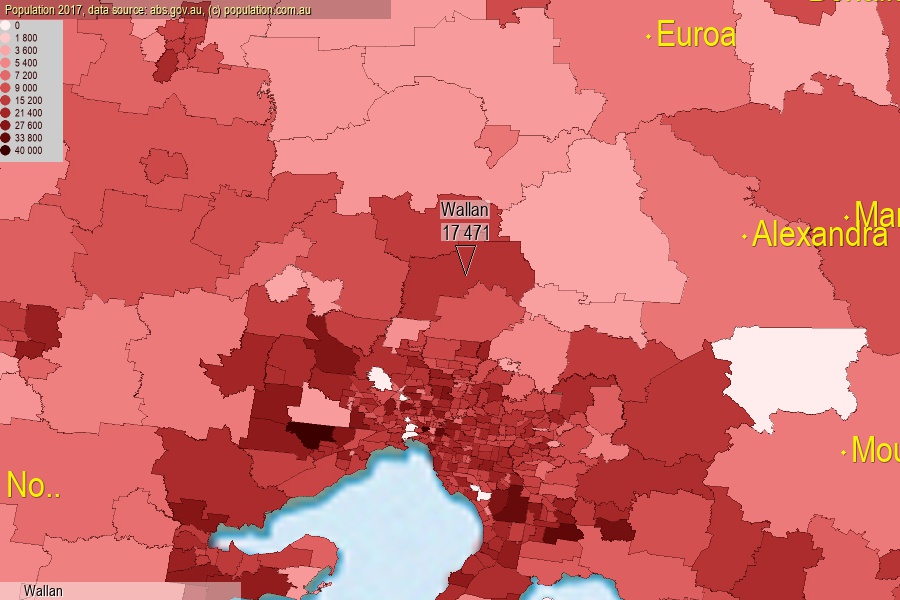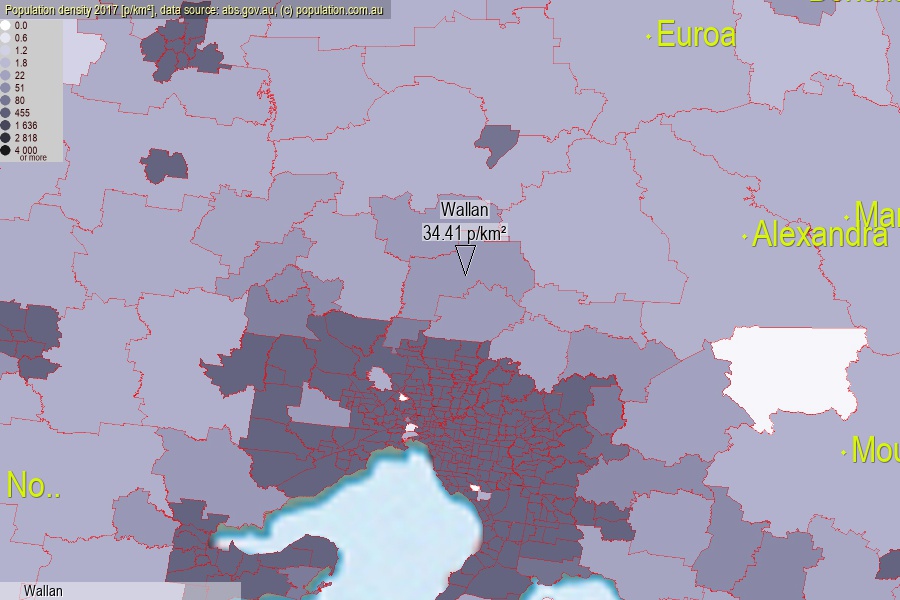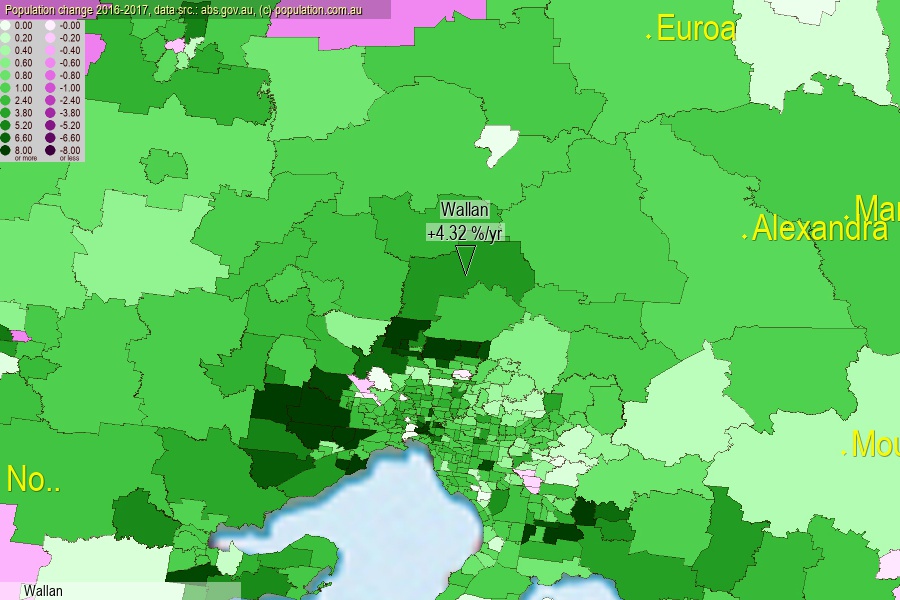 population.com.au
population.com.auLast official estimated population of Wallan (as Statistical Area Level 2) was 17 471 people (on 2017-06-30)[2]. This was 0.07% of total Australian population and 0.272% of VIC population. Area of Wallan is 507.70 km², in this year population density was 34.41 p/km² . If population growth rate would be same as in period 2016-2017 (+4.32%/yr), Wallan population in 2025 would be 24 511. [0]



Click to enlarge. Wallan is located in the center of the images.
Population [people], population density [p./km²] and population change [%/year] [2]
View borders » (new window) [4]
[1991-1992] +3.32 %/Yr.
[1992-1993] +3.98 %/Yr.
[1993-1994] +4.17 %/Yr.
[1994-1995] +3.87 %/Yr.
[1995-1996] +4.67 %/Yr.
[1996-1997] +6.72 %/Yr.
[1997-1998] +5.58 %/Yr.
[1998-1999] +4.99 %/Yr.
[1999-2000] +4.82 %/Yr.
[2000-2001] +4.35 %/Yr.
[2001-2002] +6.38 %/Yr.
[2002-2003] +7.37 %/Yr.
[2003-2004] +5.75 %/Yr.
[2004-2005] +5.04 %/Yr.
[2005-2006] +2.85 %/Yr.
[2006-2007] +2.48 %/Yr.
[2007-2008] +3.33 %/Yr.
[2008-2009] +3.02 %/Yr.
[2009-2010] +3.33 %/Yr.
[2010-2011] +4.69 %/Yr.
[2011-2012] +7.39 %/Yr.
[2012-2013] +7.39 %/Yr.
[2013-2014] +5.70 %/Yr.
[2014-2015] +5.57 %/Yr.
[2015-2016] +6.76 %/Yr.
[2016-2017] +4.32 %/Yr.
[0] Calculated with linear interpolation from officially estimated population
[1] Read more about SA2 and Australian Statistical Geography Standard (ASGS) on abs.gov.au
[2] Population data from Australian Bureau of Statistics (Population and density: 2017; change: 2016-2017)
[3] Digital Boundaries: Australian Statistical Geography Standard (ASGS) 2016.
[4] Border coordinates are simplifyed using Ramer-Douglas-Peucker algorithm.